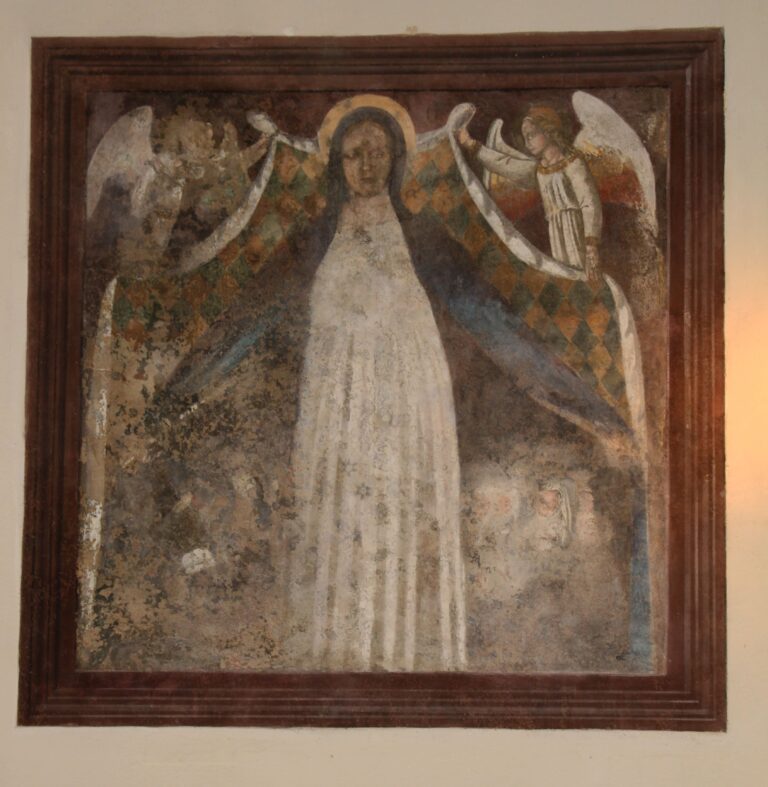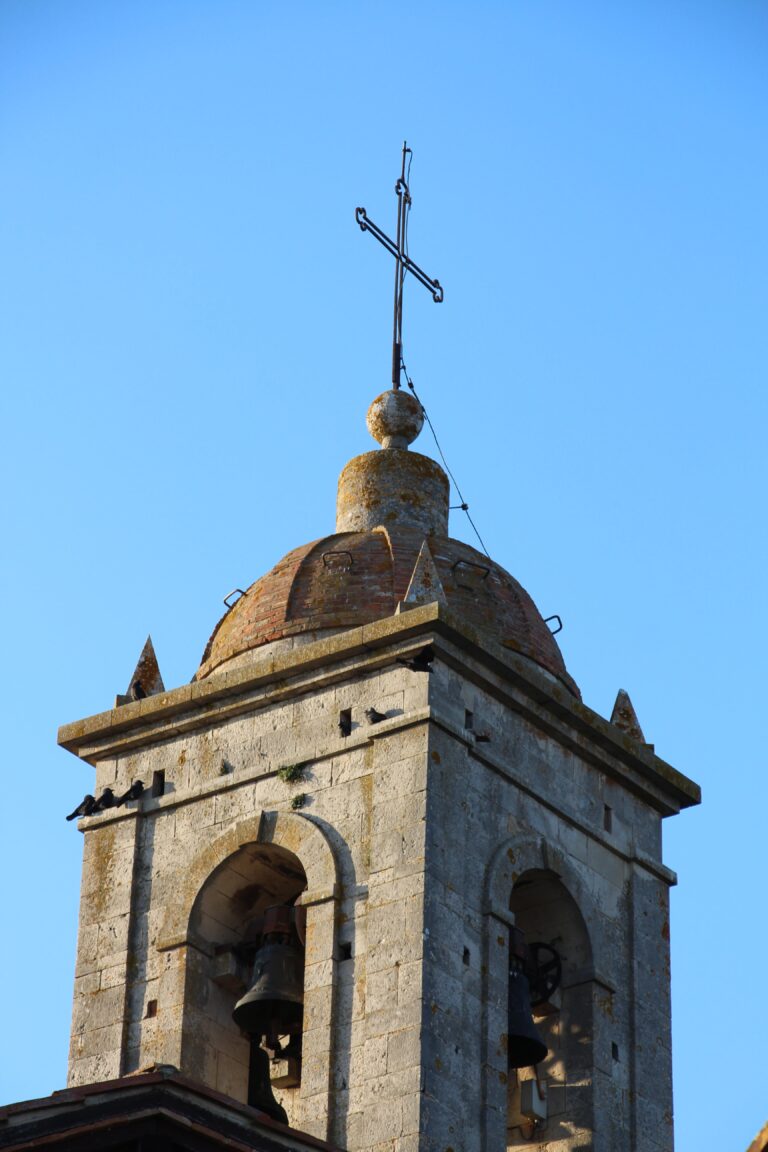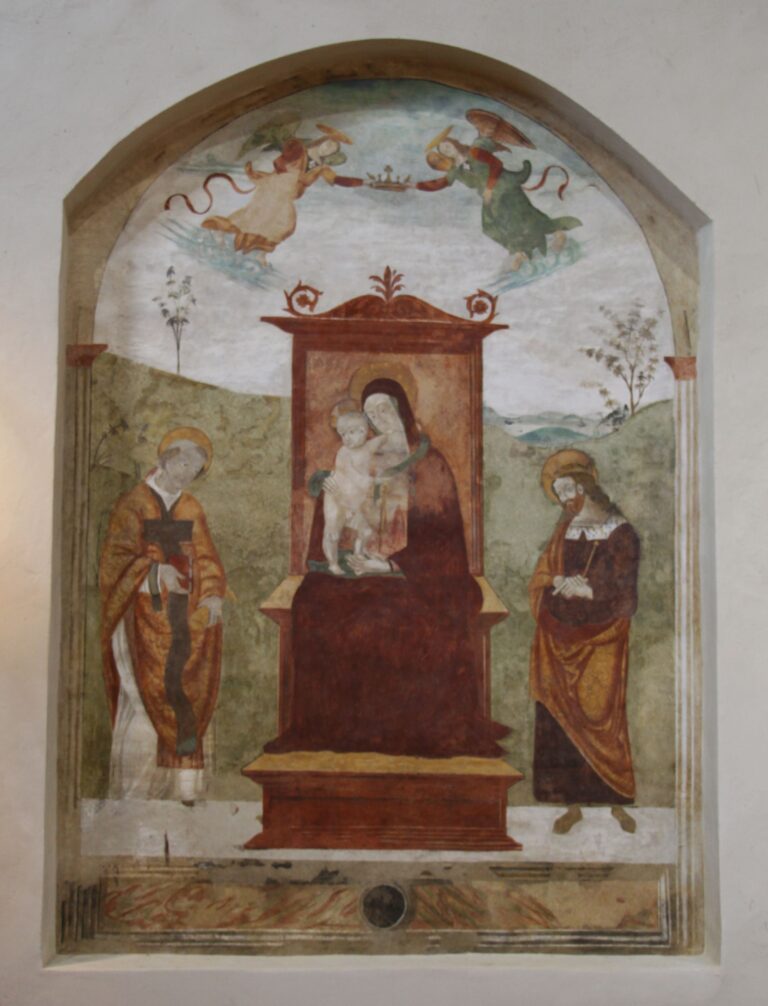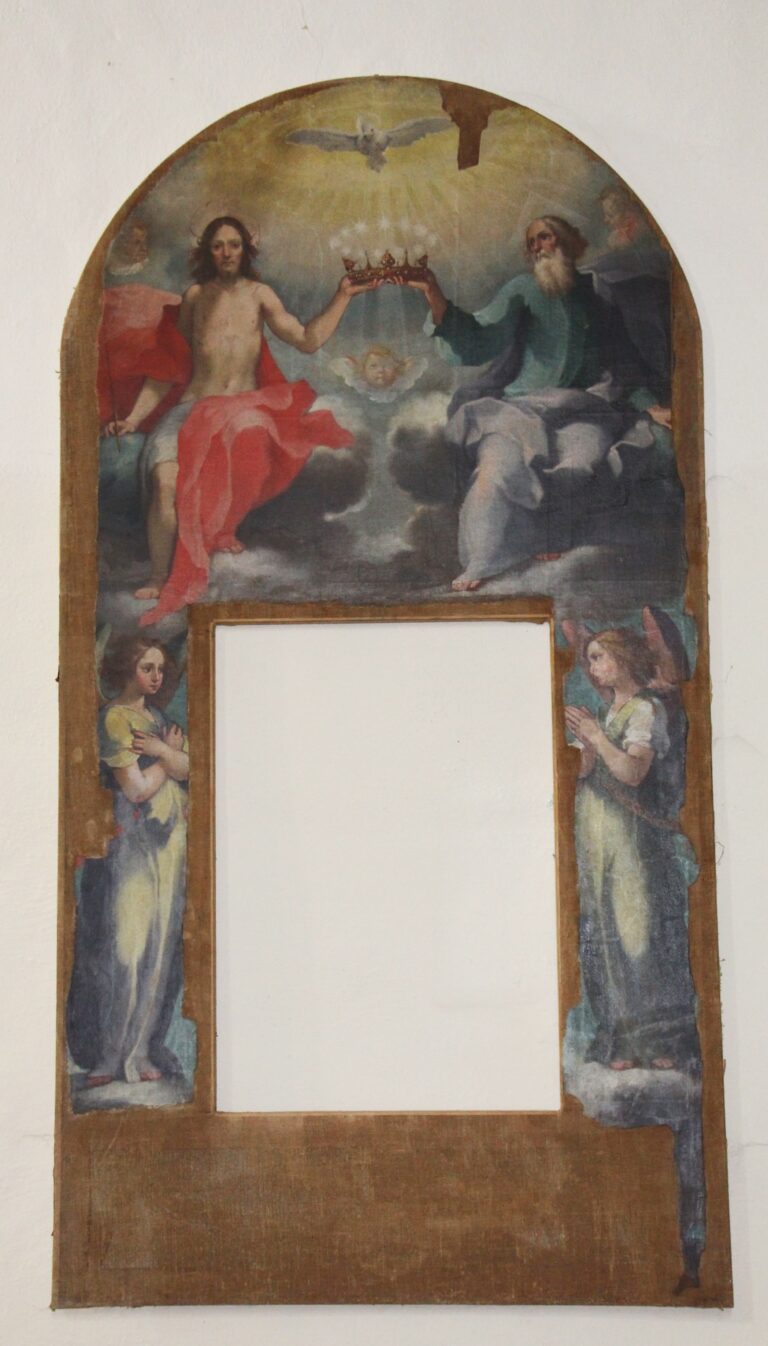CHIESA DI SAN LEONARDO
Built in the first half of the 13th century in a blend of Romanesque and Gothic styles. The main door is flanked by columns very similar to those that were also on the façade of the Abbey of Saint Mary of Follonica (Abbazia de Santa Maria de Follonica). The stone used is local to the area – limestone and sandstone, worked to create non-uniform light and dark shades, a ‘chiaroscuro’ effect.It is the most important religious building in the village. In 1266, the 223 inhabitants of Montefollonico gathered in the piazza next to the church to swear loyalty in the name of God to the Republic of Siena and to agree a self-imposed fine of 100 lira if that pledge was broken. Inside the church there is a splendid early 17th century altarpiece in stucco made to resemble marble. Inserted within this is a copy of a panel painting by Guidoccio Cozzarelli representing the Madonna and Child with Saints Sebastian andAnthony.
A recently restored fresco on the left wall of the church depicts the Madonna and baby Jesus seated on a throne between Saints Donato and Sigismondo. This was, until the beginning of the last century, covered up by the large canvas next to it, which depicts the birth of John the Baptist and is attributed to Vincenzo Rustici (painted between1615-1625). On the right wall of the church there is a large canvas representing the circumcision of Christ in the presence of Saint John the Evangelist, Saint Lucia and the young Saint John The Baptist, attributed to Vincenzo and Francesco Rustici (circa 1618). Another altar, this one in wood, is present in the side chapel where a 14th century sculpture of Christ on the cross called “the crucifix of Brandano” is exhibited.
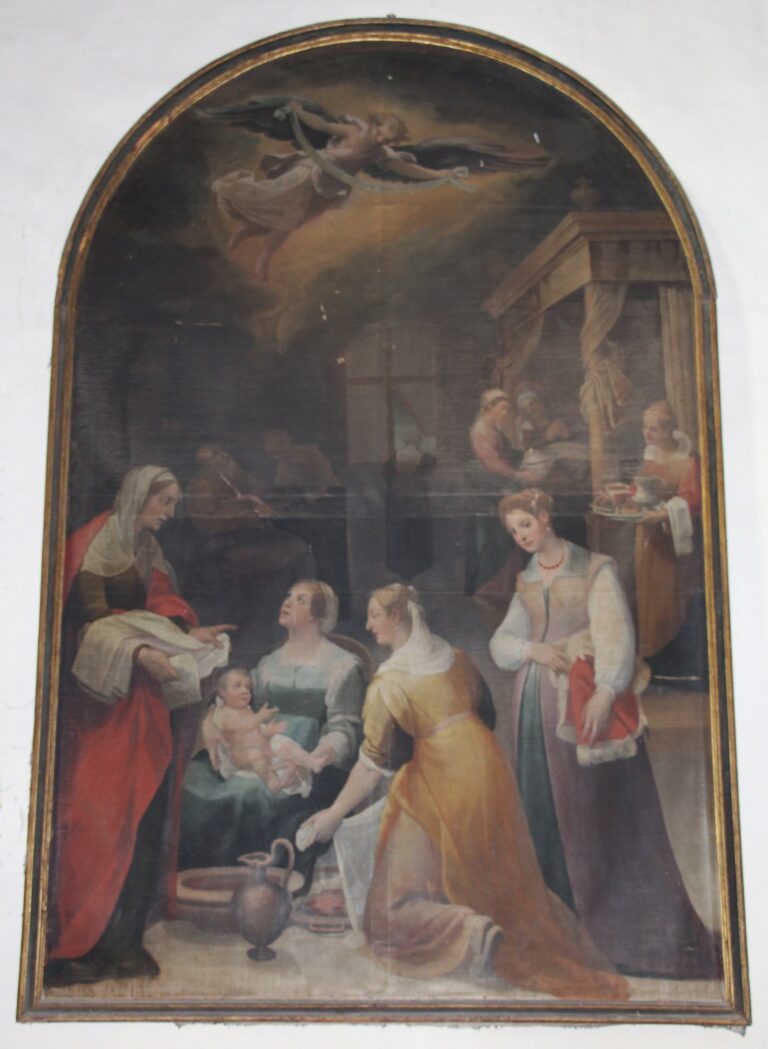
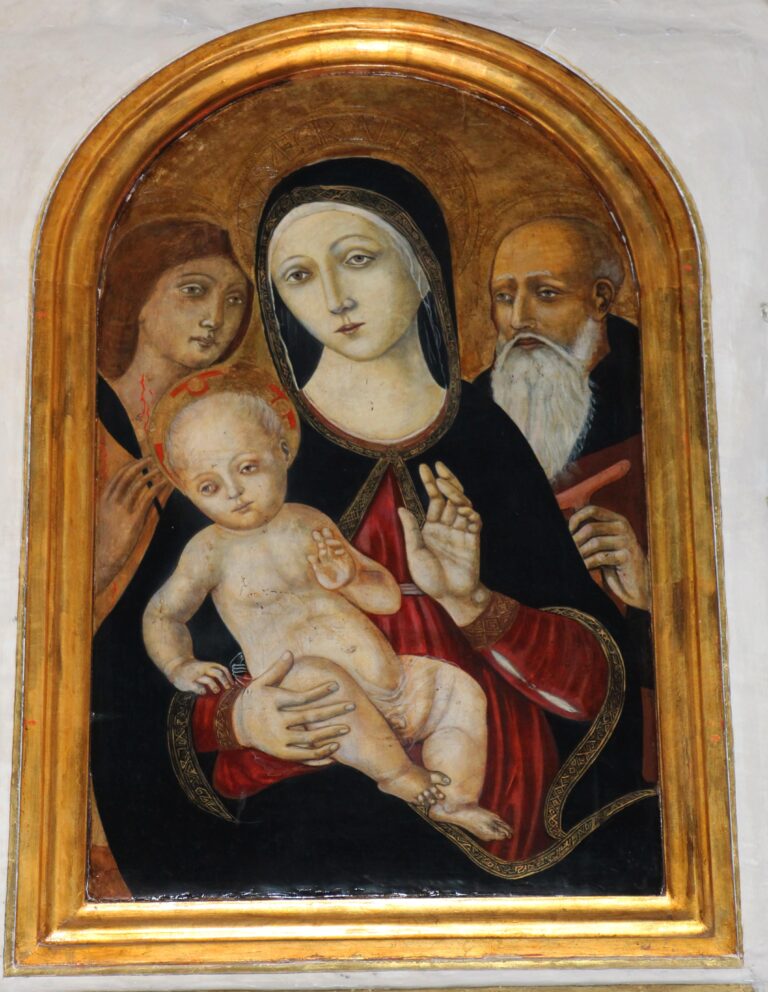
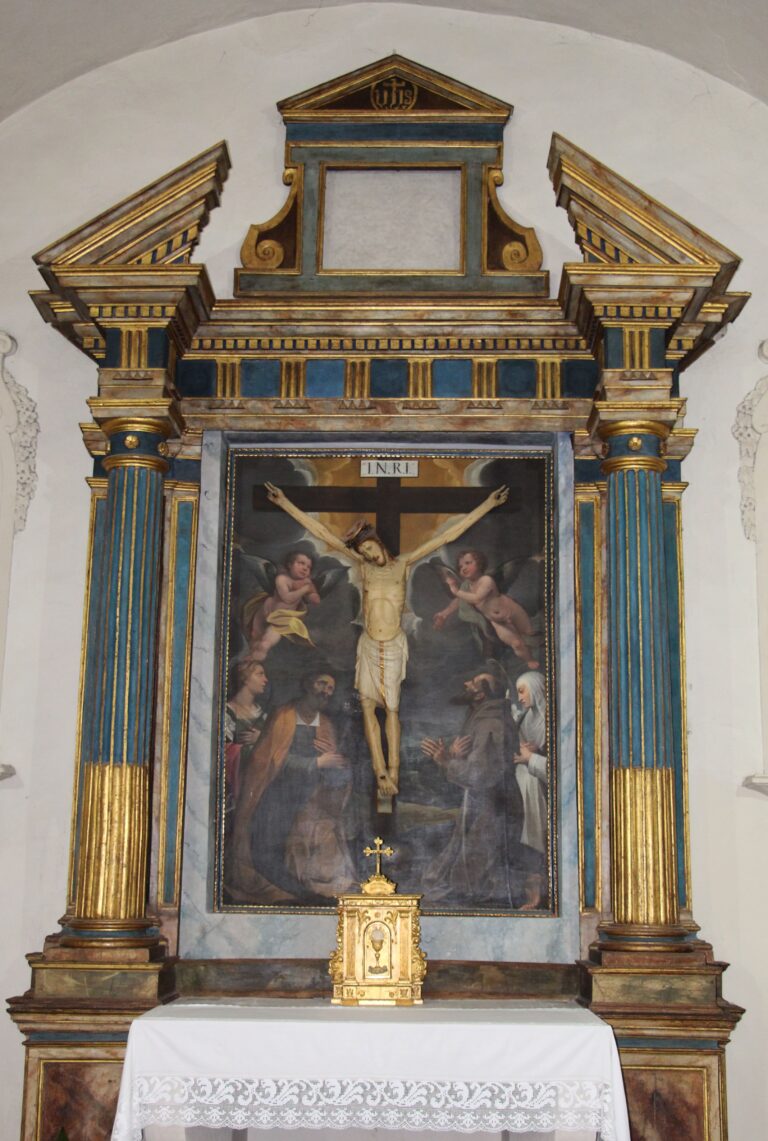
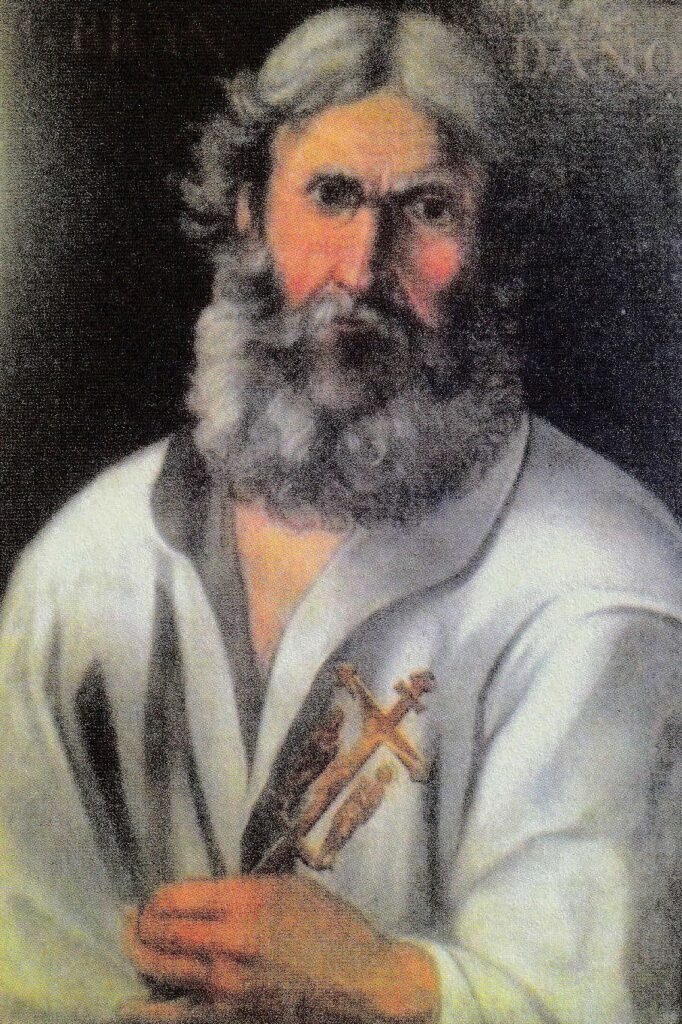
Brandano: Born in Pretorio (about 9 kilometers from Montefollonico) at the end of the 15th century. He resided in Montefollonico, in front of the church of San Leonardo, as he was married to a mountain girl named Francesca (Checca). A land worker at Podere Sasseto in Montefollonico, he was a blasphemer with a dissolute life. Following an accident at work, while he was hoeing the earth, in the Church of San Leonardo, in front of the crucifix that still exists, he had the conversion. From this moment he began to preach against the Medici of Florence and the Pope. He moved to France and Rome where he wanted to meet the Pope; here the Pope’s Swiss Guards locked him up in a sack and threw him into the Tiber. Brandano miraculously fled while continuing to preach, foreseeing the fall of the Republic of Siena. His poor objects are kept in Siena where he died in 1554.
